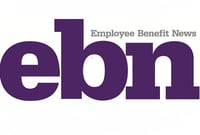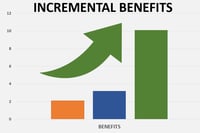Consolidation Corner
-
Blog
- 401k Cash Outs
- 401k Consolidation
- 401k Plan Termination
- America's Mobile Workforce
- Assisted Roll-in
- Auto Enrollment
- Auto Portability
- Auto Portability Simulation
- Automatic Roll-In
- Automatic Rollover
- Automatic Rollovers
- Boston Research Technologies
- CARES act
- Common Mistakes
- DIY Roll-In
- DOL Advisory Opinion
- EBRI
- Employee Benefit News
- ERISA Advisory Council
- Financial Services Roundtable
- Financial Wellness
- How-To
- In-Plan Consolidation
- Leakage
- Lifetime Plan Participation
- Lost Participants
- Managed Portability
- Mandatory Distributions
- MarketWatch
- Missing Participant IRA
- Missing Participants
- National Retirement Savings Cash Out Clock
- Participant Transition Management
- PLANSPONSOR
- Portability Services Network
- PSCA
- Public Policy
- RCH Services
- Retirement Income
- Retirement Plan Portability
- retirement research
- Retirement Savings Consolidation
- Retirement Savings Portability
- Roll-In
- Safe Harbor IRA
- Saver's Match
- Security
- Small Accounts
- Stale Dated Checks
- Synthetic Tenure
- Uncashed Check Services
- Uncashed Distribution Checks
- Video
- Webcast
- What is a Missing Participant?
Retirement Plan Portability (2)
Consolidation Corner Blog
Consolidation Corner is the Retirement Clearinghouse (RCH) blog, and features the latest articles and bylines from our executives, addressing important retirement savings portability topics.
Dressing Up Traditional Automatic Rollovers
 Recently, we’ve read – mainly via paid promotions – about the existence of so-called “world-class” automatic rollover IRA services, which seem to be little more than old-school, traditional automatic rollover IRAs laying claim to unspecified, premium features.
Recently, we’ve read – mainly via paid promotions – about the existence of so-called “world-class” automatic rollover IRA services, which seem to be little more than old-school, traditional automatic rollover IRAs laying claim to unspecified, premium features.
ERISA’s Golden Anniversary has Set the Stage for Helping Future Generations Improve Their Retirement Outcomes—in 2025 & Beyond
 On September 2, 1974, President Gerald Ford signed the Employee Retirement Income Security Act (ERISA) into law. Since that time, ERISA has become the regulatory backbone of the retirement services industry. And on September 12, members of the industry, along with legislators, government regulators, and other private and public sector representatives, came together to celebrate ERISA’s golden anniversary in Washington, D.C. My colleagues and I were honored to be among those in attendance.
On September 2, 1974, President Gerald Ford signed the Employee Retirement Income Security Act (ERISA) into law. Since that time, ERISA has become the regulatory backbone of the retirement services industry. And on September 12, members of the industry, along with legislators, government regulators, and other private and public sector representatives, came together to celebrate ERISA’s golden anniversary in Washington, D.C. My colleagues and I were honored to be among those in attendance.
Auto Portability Adoption Picks Up Steam
 New retirement innovations, however compelling they may be, face their biggest challenge in surmounting the glacial pace of change that prevails in the retirement industry, where nothing comes easy.
New retirement innovations, however compelling they may be, face their biggest challenge in surmounting the glacial pace of change that prevails in the retirement industry, where nothing comes easy.
The Future is Brighter for Small-Balance Retirement Accounts
 While small-balance retirement savings accounts have fared poorly in the past, their future has never looked brighter. Real progress is being made in reducing their numbers while simultaneously preserving and consolidating their savings, vs. previous “solutions” that encouraged them to cash out or exiled them to dead-end safe harbor IRAs.
While small-balance retirement savings accounts have fared poorly in the past, their future has never looked brighter. Real progress is being made in reducing their numbers while simultaneously preserving and consolidating their savings, vs. previous “solutions” that encouraged them to cash out or exiled them to dead-end safe harbor IRAs.
Highway Through the 'Danger Zone'
 The 401(k) cashout leakage problem is once again in the news, with the publication of an alarming study by academics, as well as new data from Fidelity Investments revealing a cashout leakage ‘danger zone’ facing participants between the ages of 30-39.
The 401(k) cashout leakage problem is once again in the news, with the publication of an alarming study by academics, as well as new data from Fidelity Investments revealing a cashout leakage ‘danger zone’ facing participants between the ages of 30-39.
These studies, combined with the mounting weight of empirical evidence gathering for more than a decade, confirm that 401(k) cashout leakage is a huge, persistent problem.
Five Reasons Why New 401(k) Auto Portability Legislation is So Important
 A newly proposed bill -- the Advancing Auto Portability Act of 2022, co-sponsored by Senators Tim Scott (R-S.C.) and Sherrod Brown (D-Ohio), will offer tax credits to plan sponsors who implement auto portability, and codify rules for an industrywide auto portability network. The bill is expected to be rolled into the Senate version of the bipartisan Securing a Strong Retirement Act of 2022, which passed the U.S. House of Representatives on March 29 of this year.
A newly proposed bill -- the Advancing Auto Portability Act of 2022, co-sponsored by Senators Tim Scott (R-S.C.) and Sherrod Brown (D-Ohio), will offer tax credits to plan sponsors who implement auto portability, and codify rules for an industrywide auto portability network. The bill is expected to be rolled into the Senate version of the bipartisan Securing a Strong Retirement Act of 2022, which passed the U.S. House of Representatives on March 29 of this year.
Here are five reasons why the new auto portability legislation introduced in the Senate is so important.
The Next Area to Tackle for Preserving Retirement Savings: Uncashed Distribution Checks
 Last year marked the 15th anniversary of the Pension Protection Act of 2006. This legislation included well-intentioned provisions for helping Americans increase their retirement savings, including the capability for defined contribution plan sponsors to automatically enroll employees in their plans. Despite the good intentions behind auto enrollment, and all the positive outcomes that have resulted, its introduction also coincided with high workforce mobility and a lack of seamless plan-to-plan savings portability, which has led to a surge in small, stranded 401(k) savings accounts.
Last year marked the 15th anniversary of the Pension Protection Act of 2006. This legislation included well-intentioned provisions for helping Americans increase their retirement savings, including the capability for defined contribution plan sponsors to automatically enroll employees in their plans. Despite the good intentions behind auto enrollment, and all the positive outcomes that have resulted, its introduction also coincided with high workforce mobility and a lack of seamless plan-to-plan savings portability, which has led to a surge in small, stranded 401(k) savings accounts.
Kennedy Townsend: Solving Portability and Cashout Leakage are a Key DOL Priority
 On 12/6/21, the Employee Benefit Research Institute (EBRI) conducted day 1 of their two-day 90th Annual Public Policy Forum. This forum’s theme was “A Path to a More Equitable Solution: Solving the Retirement Coverage Gap” and it seems to have been highly popular, as it broke EBRI’s previous record for forum attendance.
On 12/6/21, the Employee Benefit Research Institute (EBRI) conducted day 1 of their two-day 90th Annual Public Policy Forum. This forum’s theme was “A Path to a More Equitable Solution: Solving the Retirement Coverage Gap” and it seems to have been highly popular, as it broke EBRI’s previous record for forum attendance.
Assessing the State of DC Plans & Retirement Savings, 15 Years After the Pension Protection Act
 Traditionally, the anniversary gift for couples celebrating their 15th wedding anniversary is crystal. When the Pension Protection Act of 2006 was signed into law 15 years ago, a crystal ball would have been useful. Although this legislation was (commendably) crafted with the best of intentions, its unintended consequences for defined contribution plan participants and sponsors continue to reverberate.
Traditionally, the anniversary gift for couples celebrating their 15th wedding anniversary is crystal. When the Pension Protection Act of 2006 was signed into law 15 years ago, a crystal ball would have been useful. Although this legislation was (commendably) crafted with the best of intentions, its unintended consequences for defined contribution plan participants and sponsors continue to reverberate.
EBRI Research Reveals Auto Portability’s Massive Incremental Benefits to Pending Legislation
 In a 9/13/21 Employee Benefit Research Institute (EBRI) webinar (The Impact of Proposed Legislative Changes on Retirement Income Adequacy), EBRI Research Director Jack VanDerhei presented an analysis of pending legislative changes, including automatic contribution plans and arrangements (ACPAs), paired with a refundable saver’s credit.
In a 9/13/21 Employee Benefit Research Institute (EBRI) webinar (The Impact of Proposed Legislative Changes on Retirement Income Adequacy), EBRI Research Director Jack VanDerhei presented an analysis of pending legislative changes, including automatic contribution plans and arrangements (ACPAs), paired with a refundable saver’s credit.
-
Blog
- 401k Cash Outs
- 401k Consolidation
- 401k Plan Termination
- America's Mobile Workforce
- Assisted Roll-in
- Auto Enrollment
- Auto Portability
- Auto Portability Simulation
- Automatic Roll-In
- Automatic Rollover
- Automatic Rollovers
- Boston Research Technologies
- CARES act
- Common Mistakes
- DIY Roll-In
- DOL Advisory Opinion
- EBRI
- Employee Benefit News
- ERISA Advisory Council
- Financial Services Roundtable
- Financial Wellness
- How-To
- In-Plan Consolidation
- Leakage
- Lifetime Plan Participation
- Lost Participants
- Managed Portability
- Mandatory Distributions
- MarketWatch
- Missing Participant IRA
- Missing Participants
- National Retirement Savings Cash Out Clock
- Participant Transition Management
- PLANSPONSOR
- Portability Services Network
- PSCA
- Public Policy
- RCH Services
- Retirement Income
- Retirement Plan Portability
- retirement research
- Retirement Savings Consolidation
- Retirement Savings Portability
- Roll-In
- Safe Harbor IRA
- Saver's Match
- Security
- Small Accounts
- Stale Dated Checks
- Synthetic Tenure
- Uncashed Check Services
- Uncashed Distribution Checks
- Video
- Webcast
- What is a Missing Participant?
